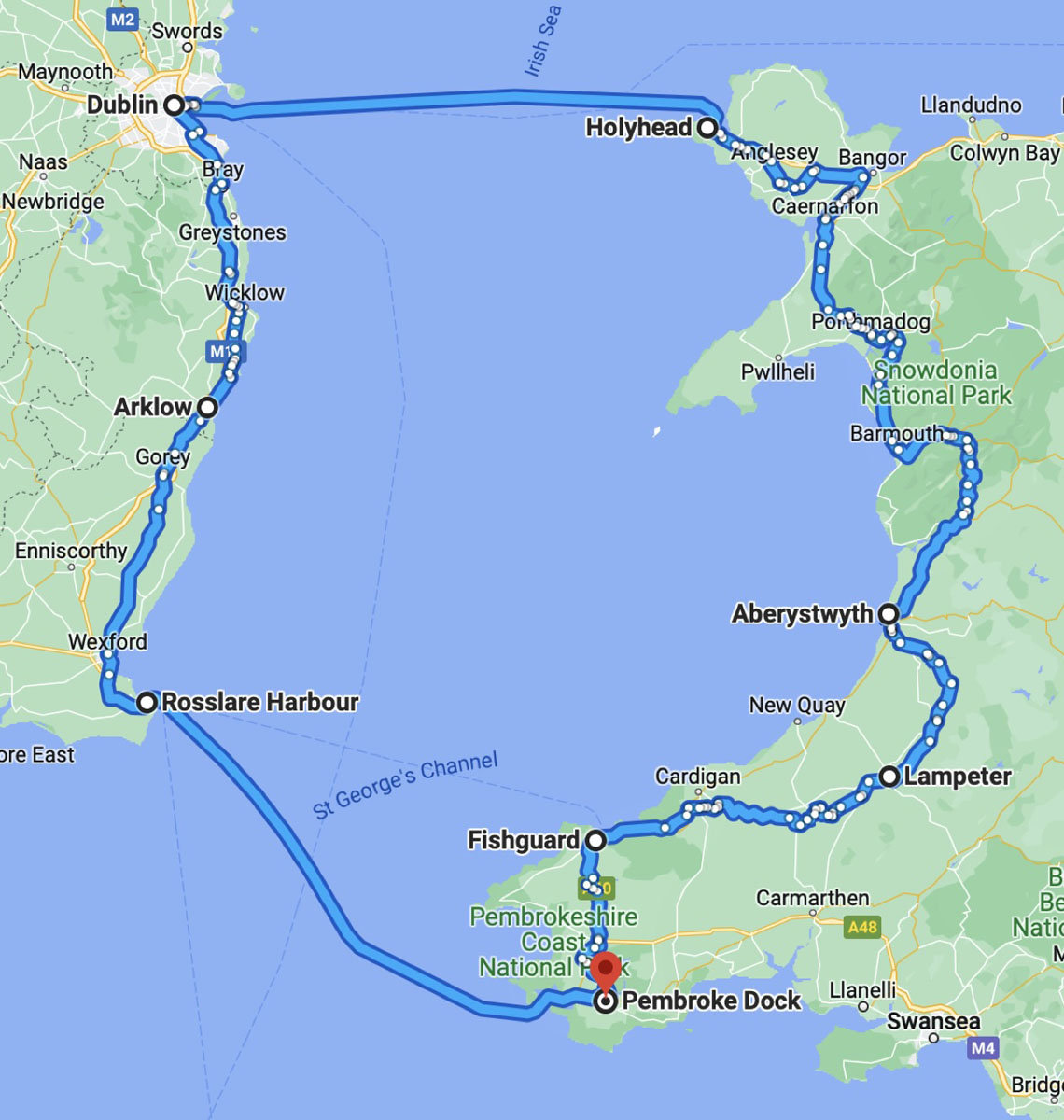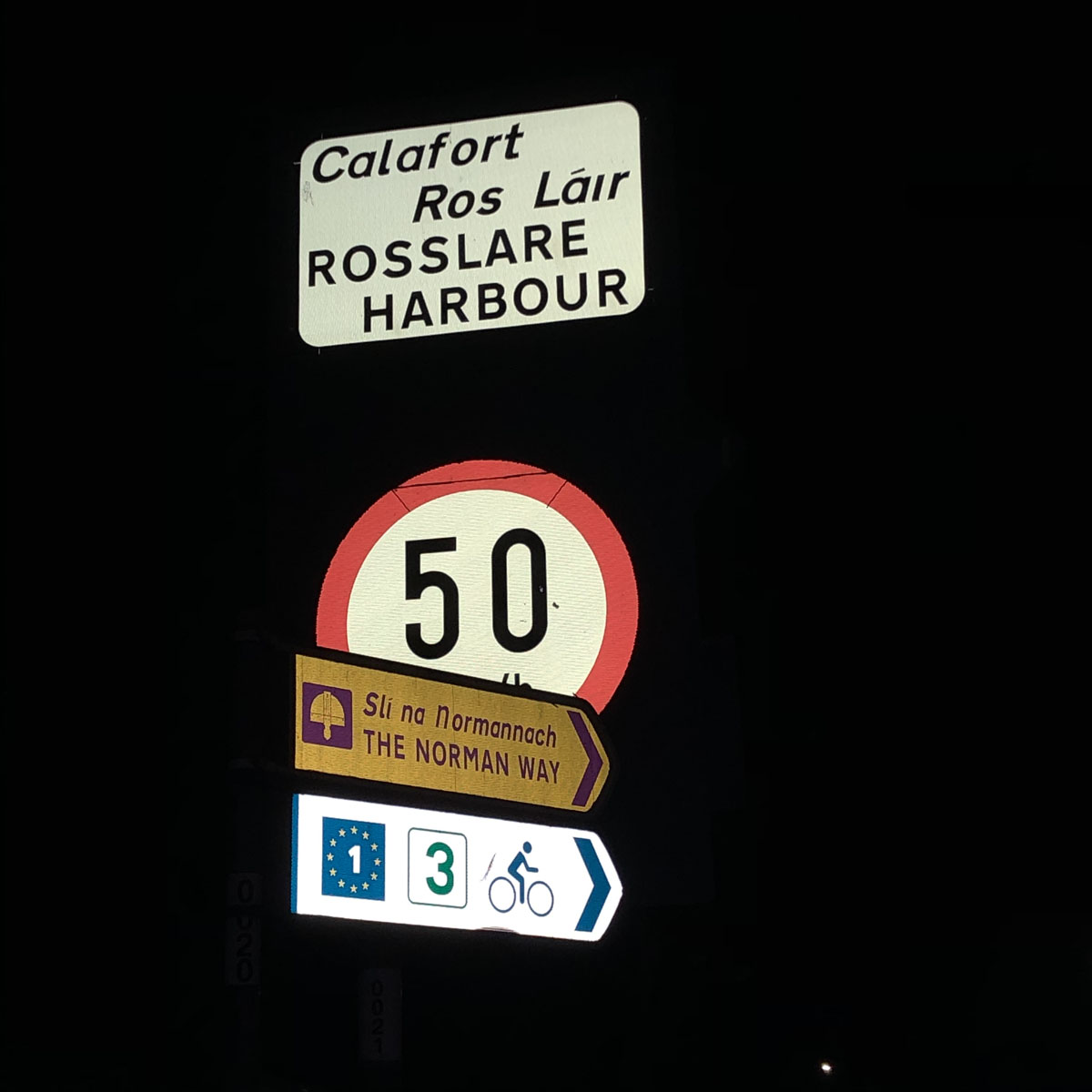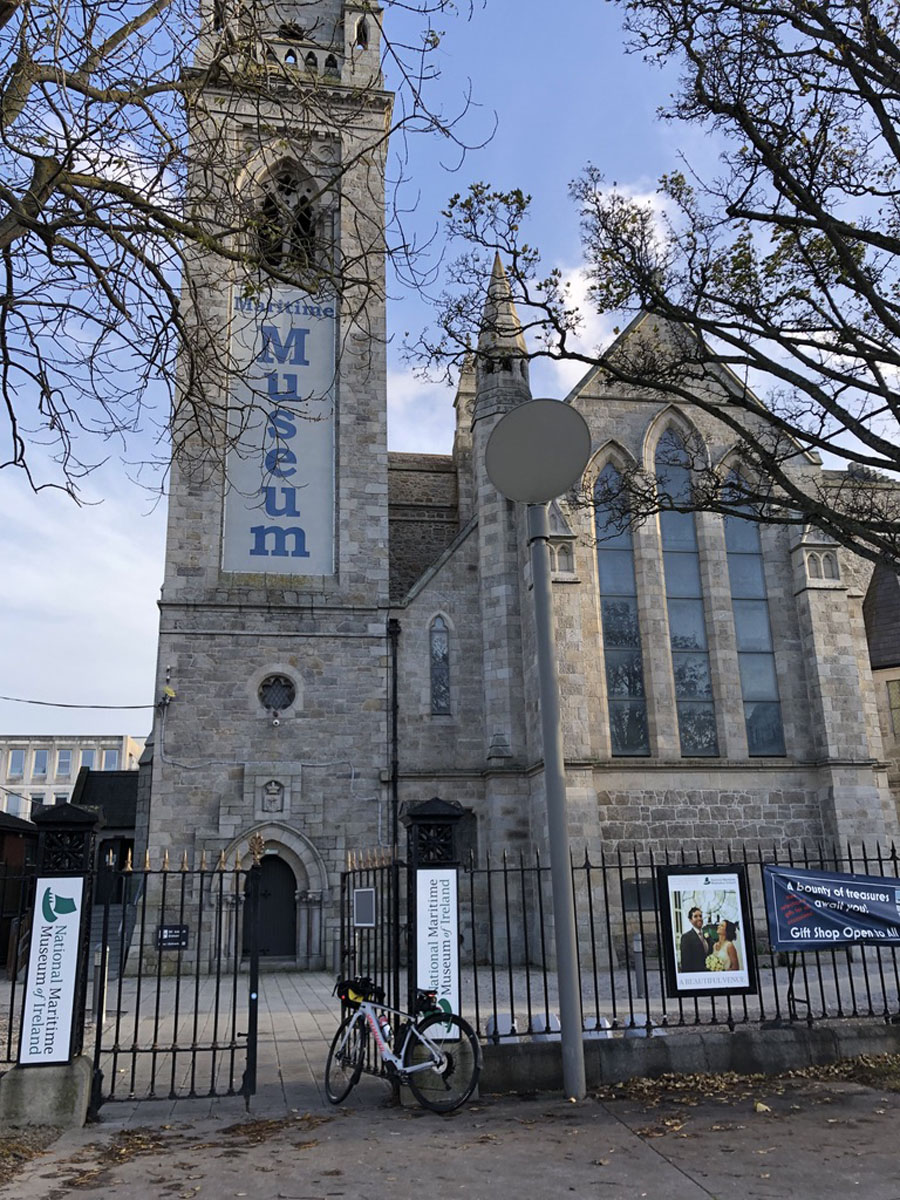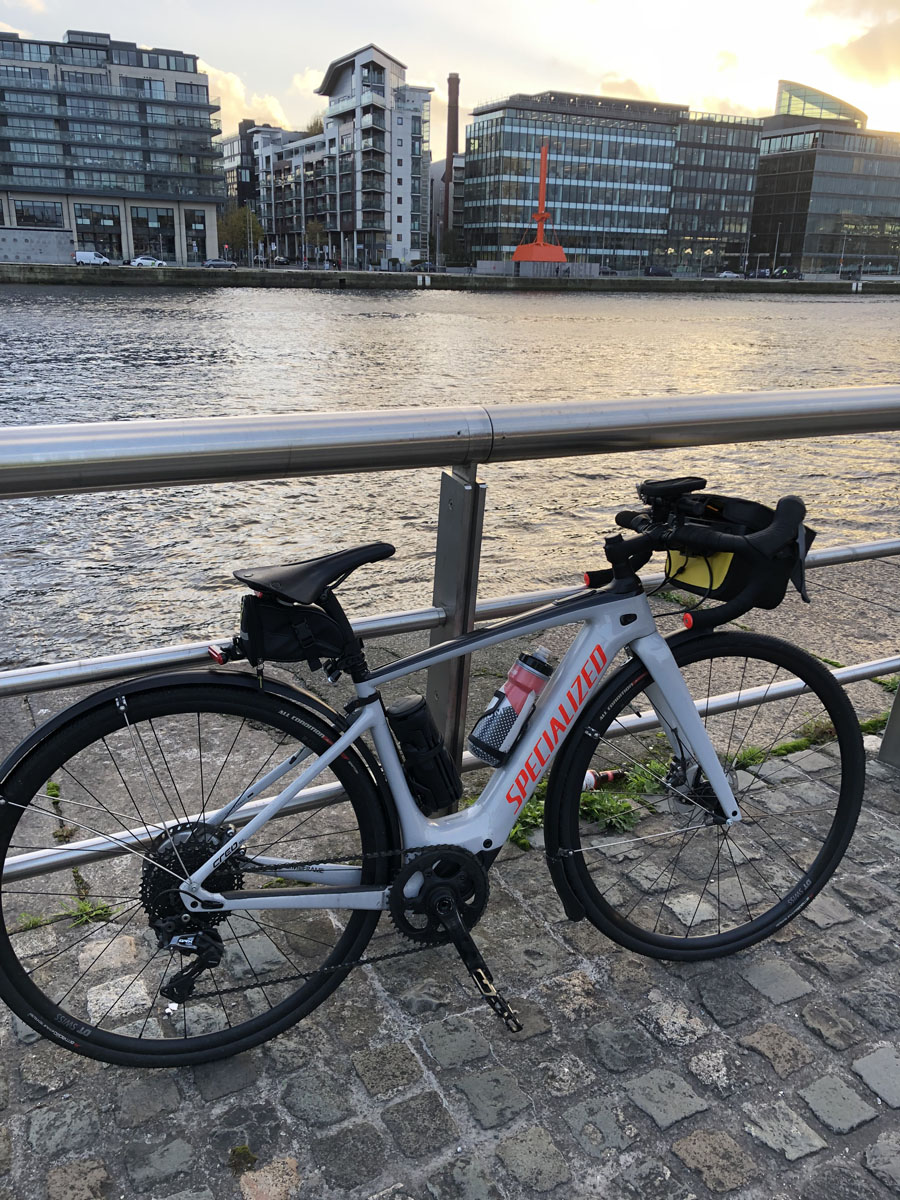Welcome to our Guest Blog Spot
 As several people have asked us we thought it would be great to have some guest bloggers contributing to our site. If you would like to be a guest blogger on this spot and write an article that is relevant to cycletouring then please get in touch. As this is a non commercial site we are looking for articles from genuine touring cyclists, therefore no commercial articles please.
As several people have asked us we thought it would be great to have some guest bloggers contributing to our site. If you would like to be a guest blogger on this spot and write an article that is relevant to cycletouring then please get in touch. As this is a non commercial site we are looking for articles from genuine touring cyclists, therefore no commercial articles please.
The Celtic Cycling Circle
The route.
By Joe Patton
Nothing beats watching the sun rising on the East coast of Ireland or setting from the West coast of Wales, says Joe Patton, author of The Celtic Cycling Circle that extends for 176km/109 miles along the East coast of Ireland and 416km/ 259 miles along the West coast of Wales.
The journey along the East coast of Ireland avoids the British equivalent of ‘A’ roads prefixed by the letter ’N’ to follow safer regional and local rotes prefixed by the letters ‘R’ and ‘L’, traffic free greenways, designated cycling paths and way marked cycling routes numbered 2 and 3 that have pre-existing levels of popularity.
Cyclists follow Eurovelo 1/local route 3 signage.
Departing from Rosslare Europort at 4am the route followed a magical network of traffic-free country lanes which at this time of the morning provided a unique cycling experience. As all you can see is limited to the distance of the front light’s shine, other senses particularly smell and hearing are heightened. The cold night air smelt surprisingly refreshing. Rustling noises coming from trees and hedges combined with occasional squeals from the undergrowth to betray the presence of wildlife that included a stealthy red fox whose beautiful slit green eyes glowed, sparkled and beamed back at me like a pair of precious emeralds.
Some 16km/10miles later, dark country lanes joined a main road into Wexford town arriving there at 5am. It used to be the case that only milkmen and people ‘up to no good‘ are out and about at 5am, so it came as no surprise to have attracted the attention of the Gardaí.
Maritime Museum of Ireland.
Continuing from Wexford I arrived in Arklow to witness daybreak. The new day was heralded by a fine mist of light showers, marked by a collective twittering, tweeting and chirps from birds. Autumnal colours looked like a landscape painting that could befit the finest art gallery; canopies of trees that once bore the green leaves of summer were changing into delicate golds tipped with strong surges of reds. As the morning air became less still, some gently fluttered down from their branches to lay at rest on the ground. This morning will be a lasting memory.
Shortly afterwards, I arrived in Wicklow, whose twin towns include Porthmadog in Wales. Memorably, members of Côr Meibion Madog / Porthmadog Male Voice Choir who are based a few miles from my Harlech home have sung in Wicklow.
My bike in Dublin next to the River Liffey.
My next place of interest was the famous Port of Dún Laoghaire. For centuries, people have departed Ireland from here to seek work overseas including James McCuskern from Sligo, who left to find work in England. He married a local girl; their grandson was my dad.
High above the sea front the National Maritime Museum of Ireland tells the story of the harbour, whose centre piece 'The Bailey Optic' came from Howth Head lighthouse, where made my way to visit. The journey to Howth passed the North Quay where a Diving Bell rests next to the quay walls that were used by men who climbed inside to excavate and deepen the River Liffey so that boats could berth to import and export goods to Dublin.
Cycling into the centre of Dublin, I came across a building on Talbot Street that used to be a Welsh chapel. It was built for sailors from Wales to attend Sunday service and was used by local Welsh girls who found housekeeping work in Dublin, also by people from England staying overnight in Dublin before sailing elsewhere. Howth Harbour was used during the early 1800s by packet boats carrying parliamentary mail between Dublin Castle, across the Irish Sea to Holyhead, then Royal Mail coaches took it along Telfords Holyhead Road to London and the Houses of Parliament.
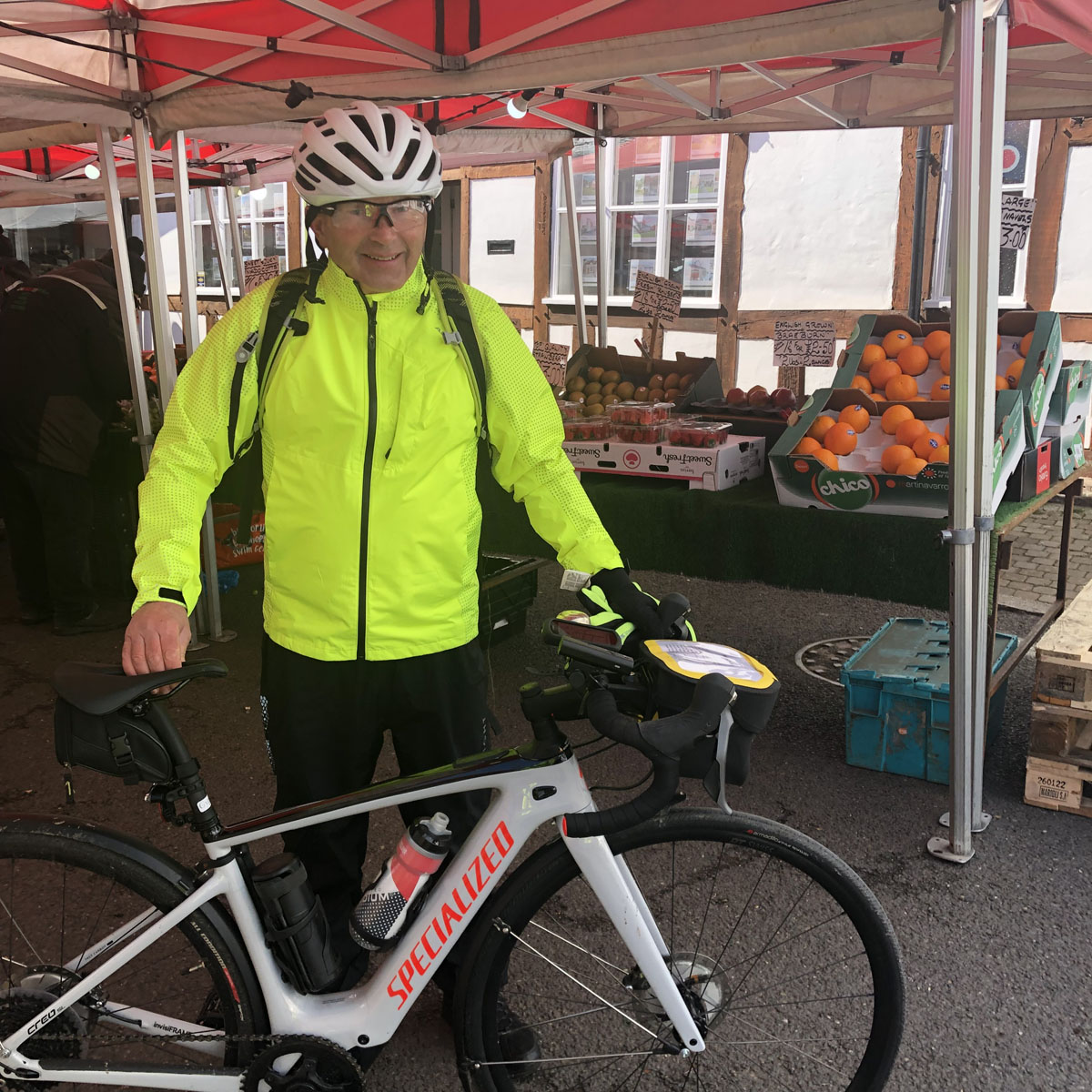
Me and my bike.
The Celtic Cycling Circle should appeal to cyclists of all abilities including e-bike riders. It can be undertaken in one ride for those seeking a fundraising challenge or at different times of the year at a leisurely pace to simply enjoy the journey. Let’s face it, that is what bicycle touring is all about.
You can read my full account of this fascinating route through Ireland and Wales along the 'The Celtic Cycling Circle’ here: www.harlechjoe.wordpress.com
 As several people have asked us we thought it would be great to have some guest bloggers contributing to our site. If you would like to be a guest blogger on this spot and write an article that is relevant to cycletouring then please get in touch. As this is a non commercial site we are looking for articles from genuine touring cyclists, therefore no commercial articles please.
As several people have asked us we thought it would be great to have some guest bloggers contributing to our site. If you would like to be a guest blogger on this spot and write an article that is relevant to cycletouring then please get in touch. As this is a non commercial site we are looking for articles from genuine touring cyclists, therefore no commercial articles please.




































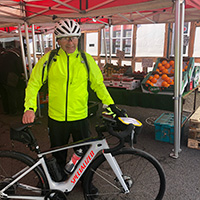 The Celtic Cycling Circle
The Celtic Cycling Circle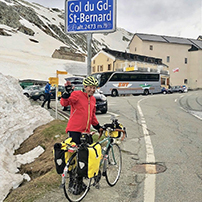 Cycling alongside the Grand Union Canal
Cycling alongside the Grand Union Canal 5 Essential Items to Take with You on Your First Cycling Tour
5 Essential Items to Take with You on Your First Cycling Tour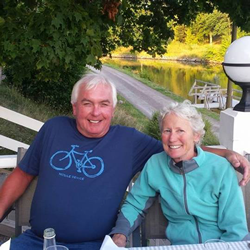 Favorite Cycling Destinations: Sardinia
Favorite Cycling Destinations: Sardinia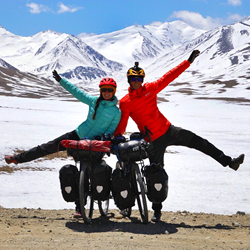 Pamir to Karakoram- cycling the highways on the roof of the world
Pamir to Karakoram- cycling the highways on the roof of the world 4 Wheels 2 Hearts 1 World - A Day in Our lives
4 Wheels 2 Hearts 1 World - A Day in Our lives Koga E-Worldtraveller - e-bike review
Koga E-Worldtraveller - e-bike review Ten tips for tandem cycle touring
Ten tips for tandem cycle touring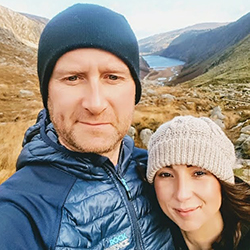 colmandsamstreks - Two Beginners in France
colmandsamstreks - Two Beginners in France